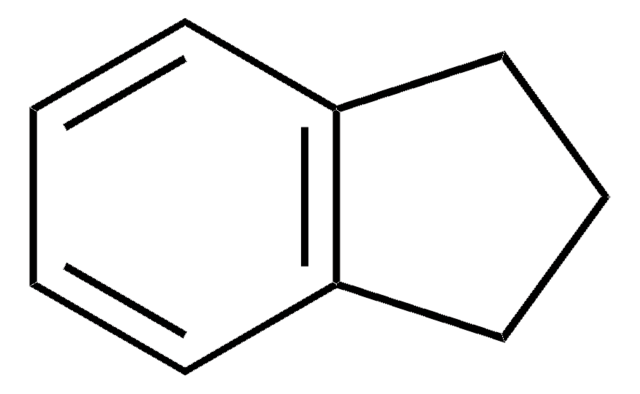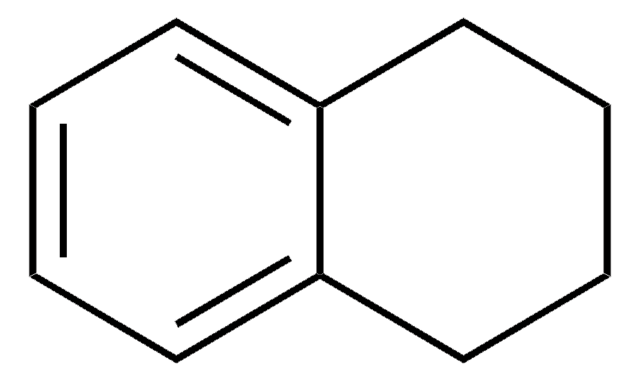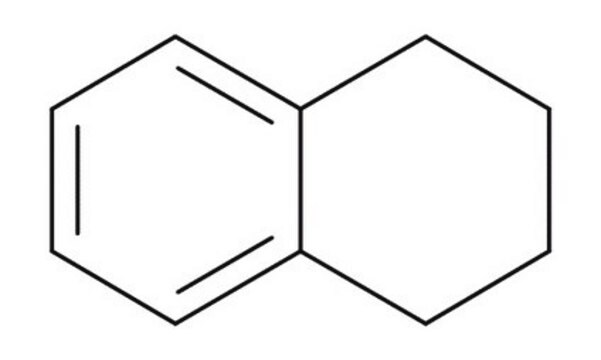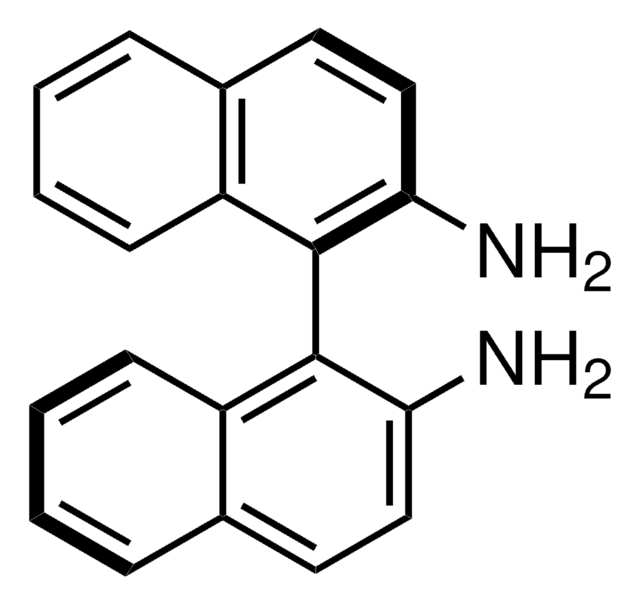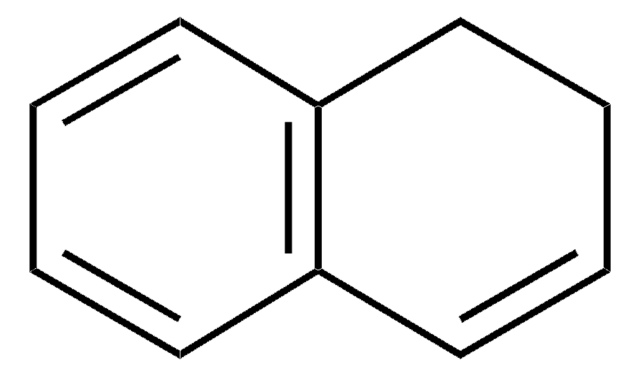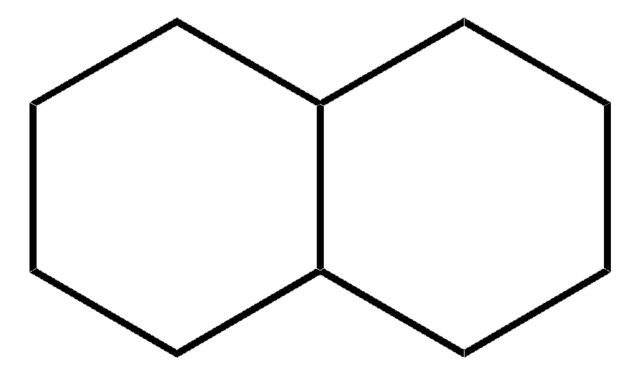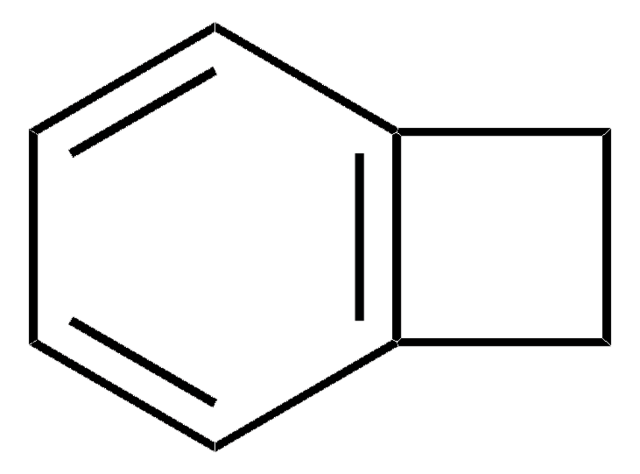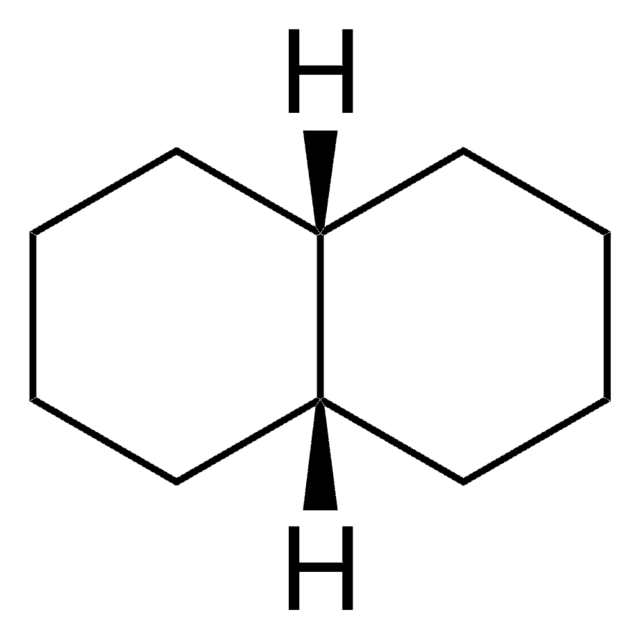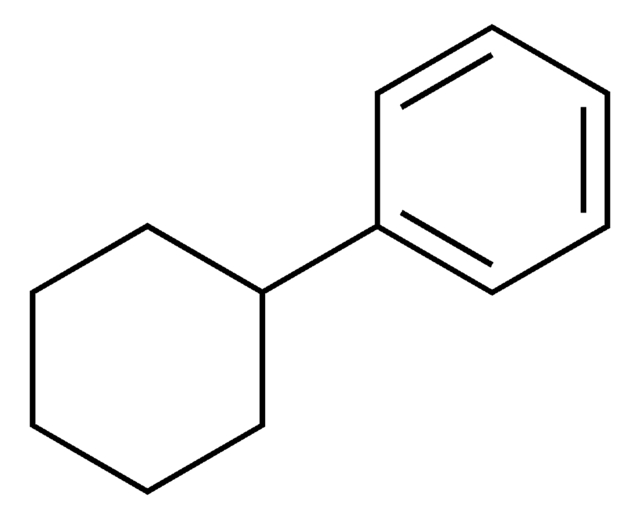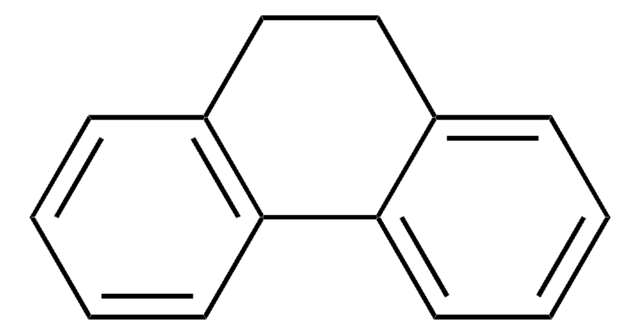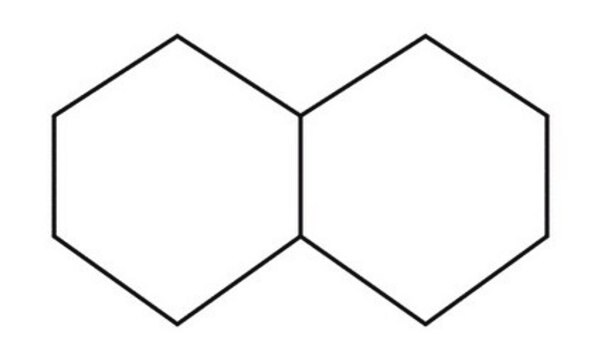522651
1,2,3,4-Tetrahydronaphthalene
anhydrous, 99%
Synonyme(s) :
Tétraline solvant
About This Item
Produits recommandés
Qualité
anhydrous
Niveau de qualité
Densité de vapeur
4.55 (vs air)
Pression de vapeur
0.18 mmHg ( 20 °C)
Essai
99%
Forme
liquid
Température d'inflammation spontanée
723 °F
Limite d'explosivité
0.8 %, 100 °F
5 %, 150 °F
Impuretés
<0.005% water
Indice de réfraction
n20/D 1.541 (lit.)
pb
207 °C (lit.)
Pf
−35 °C (lit.)
Densité
0.973 g/mL at 25 °C (lit.)
Chaîne SMILES
C1CCc2ccccc2C1
InChI
1S/C10H12/c1-2-6-10-8-4-3-7-9(10)5-1/h1-2,5-6H,3-4,7-8H2
Clé InChI
CXWXQJXEFPUFDZ-UHFFFAOYSA-N
Vous recherchez des produits similaires ? Visite Guide de comparaison des produits
Catégories apparentées
Description générale
Application
Informations légales
Mention d'avertissement
Danger
Mentions de danger
Conseils de prudence
Classification des risques
Aquatic Chronic 2 - Asp. Tox. 1 - Carc. 2 - Eye Irrit. 2 - Skin Irrit. 2
Risques supp
Code de la classe de stockage
10 - Combustible liquids
Classe de danger pour l'eau (WGK)
WGK 2
Point d'éclair (°F)
159.8 °F - closed cup
Point d'éclair (°C)
71 °C - closed cup
Faites votre choix parmi les versions les plus récentes :
Déjà en possession de ce produit ?
Retrouvez la documentation relative aux produits que vous avez récemment achetés dans la Bibliothèque de documents.
Les clients ont également consulté
Notre équipe de scientifiques dispose d'une expérience dans tous les secteurs de la recherche, notamment en sciences de la vie, science des matériaux, synthèse chimique, chromatographie, analyse et dans de nombreux autres domaines..
Contacter notre Service technique